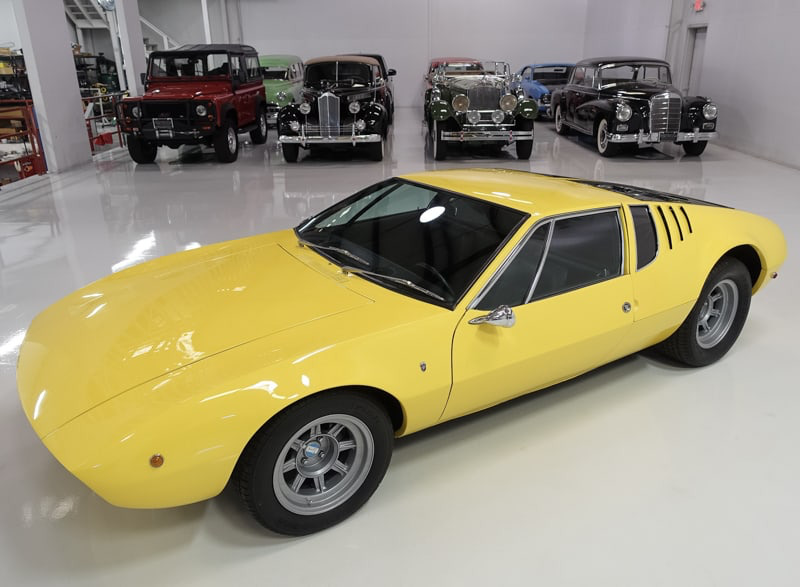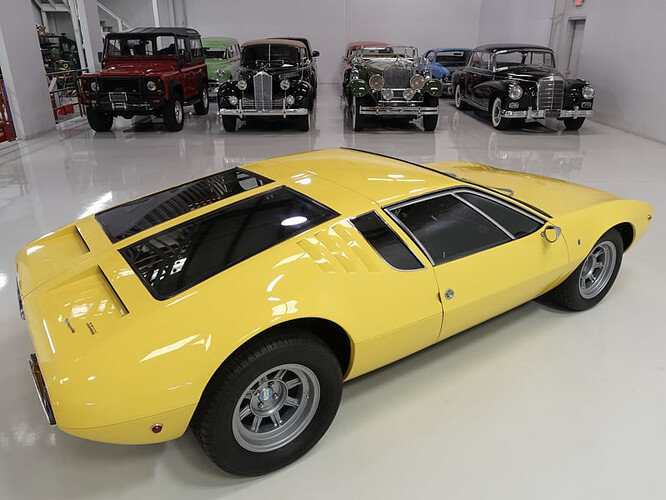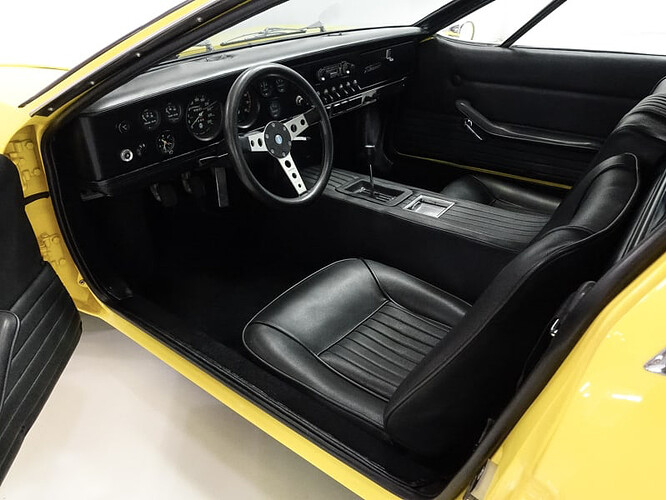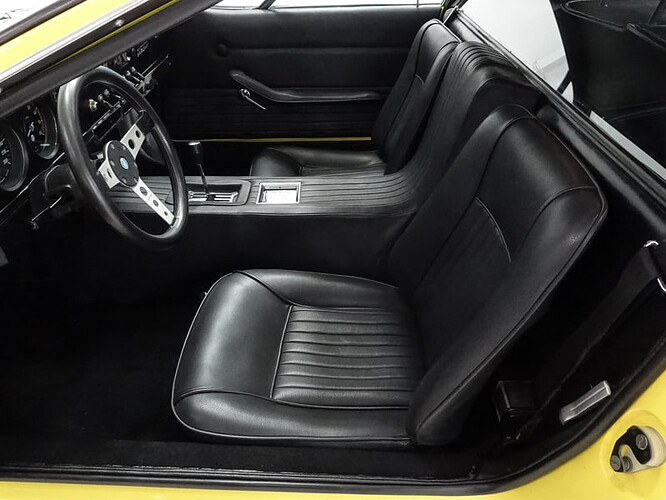1967 De Tomaso Mangusta
Country of Origin: Italy
Design Info: A two-seat mid-engined sports car with a Giugiaro-designed body mounted on the chassis of an abortive De Tomaso/Shelby race car, the P70. The Mangusta featured independent suspension, all-around disc brakes, air conditioning and power windows. A dramatic, windowed gull-wing “hood” covers the engine and rear cargo compartment. It would also be the first production car to use different-sized front and rear tires.
Engine Info: The Ford 289 HiPo V8, famously used in Mustangs including the legendary Shelby GT350, equipped with a multitude of higher-performance parts as compared with the standard Windsor 289, including a four-barrel carburetor, sturdier crankshaft, and a unique cooling fan. In the Mangusta, like the GT350, the 289 made 306 HP.
Type: Comparable to 1st gen supercars like the Lamborghini Miura and Ferrari Daytona. Would also be good competition for the Cobra, given the bad blood between De Tomaso and Shelby.
History: The Argentinian-born racing driver Alejandro de Tomaso, having fled to Italy after implication in a plot to overthrow the controversial Argentinian President Juan Perón, founded De Tomaso Modena SpA in 1959 to build race cars.
After releasing his first road car in 1964, the Vallelunga, he approached Carroll Shelby about a collaborative project to build a new race car for the Can-Am series. Shelby agreed to back the program, but the collaboration was short lived, and while Shelby backed out and subsequently joined Ford’s GT40 project, Tomaso and Peter Brock finished a single car, the De Tomaso Sport 5000, in time for the 1965 Turin Motor Show. The car was entered in several events but failed to compete until the 1966 Mugello Grand Prix, where it was withdrawn in the first lap.
De Tomaso acquired the Ghia design firm, and a design by Giorgetto Giugiaro intended for the Iso Rivolta but rejected by the company. Mating this body to the somewhat modified chassis of the P70/Sport 5000, the De Tomaso had a new design for a road-going sports car that could be built in larger numbers than the previous Vallelunga.
The name “Mangusta” (Italian for “Mongoose”) was selected by De Tomaso who, still stinging from his effort with Carroll Shelby, chose the name of an animal which “would take on a Cobra and win”. He engined the early cars with the same 289 Ford V8 that powered the P70 project, though most of the 401 produced would end up with a less powerful Windsor 302. After a few short years, the Mangusta would be replaced with the far more popular Pantera.
Why it’s cool/unique/significant: The Mangusta wasn’t the first Italian sports car built with an American V8, but its descendant, the Pantera, is probably the most famous example of such a marriage. The Mangusta isn’t only cool for its place in De Tomaso’s heritage, however: It was a dramatically styled car which drew attention for its looks, especially the unique gull-wing hood.










